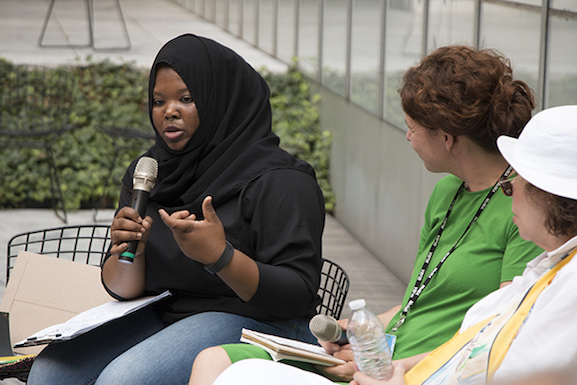Elizabeth Riggle has been a full-time preparator at the Museum for 16 years (not counting the four years she was a temporary employee). Selflessly, Elizabeth gives her all to make every part of the exhibitions she works on perfect. Her attention to detail comes through in her lush, flowing, painterly works that mine an array of forms including flowers, bones, or comic book characters. A freedom of movement, play, and rich palettes happily seduce the viewer. Immerse yourself!
MoMA: When are you able to work on your artwork?
I live like I’m in the military. I have to be rigorous about my schedule weekends are not weekends. True for a lot of us in this position.
What is the best and worst part of being an artist working at the Museum?














